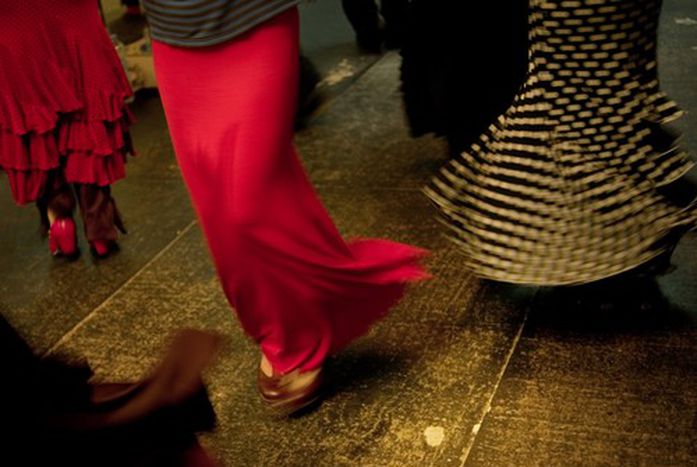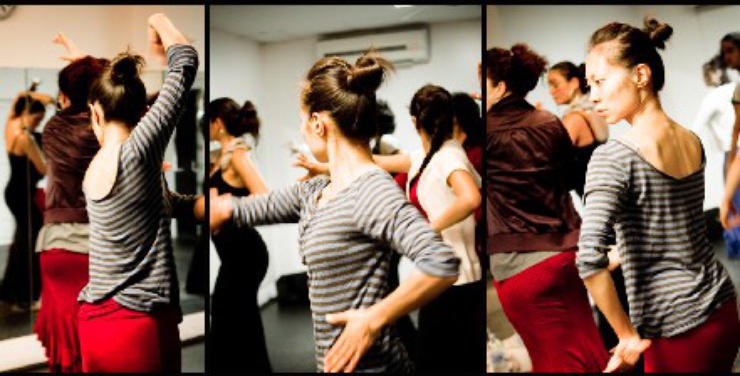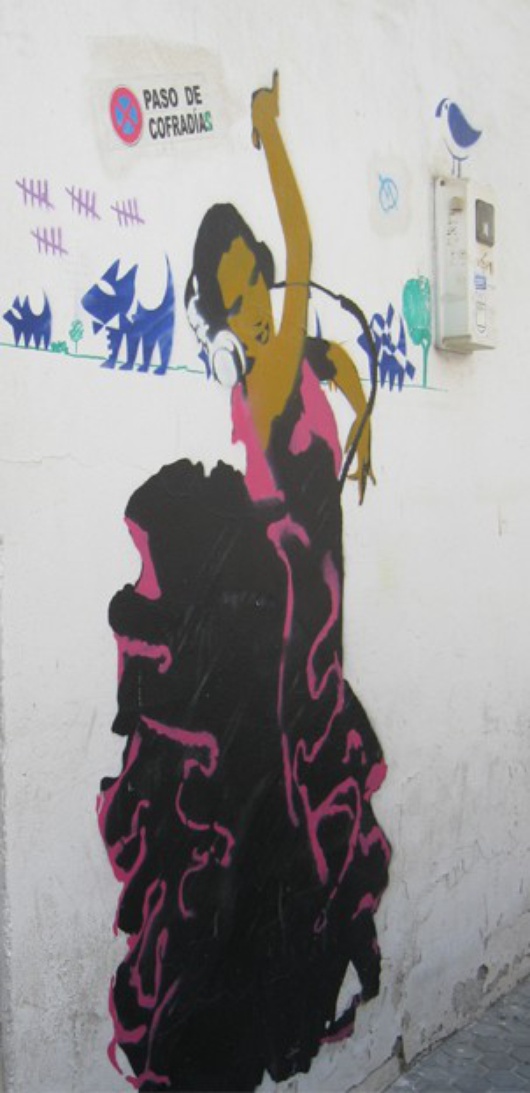
Flamenco – Andalusia’s jazz
Published on
Translation by:
Sarah GrayFlamenco is on a roll. Shows tour all over Europe and hundreds of people travel to Seville in the hope of establishing themselves as professional dancers. But on the dance floor, the native Andalusians are holding onto their tradition and are reticent to share their heritage with outsiders.
With its subtle and exciting mix of tradition and modernity, Seville is an attractive destination and Flamenco, the intriguing Andalusian way of life, one of its biggest selling points. A fact that language schools, from the Institut Cervantes to Study Global, have clearly picked up on as they are now selling “Andalusian Immersion” packages, offering lessons in both Spanish and Flamenco to attract foreign students.
So does the authentic cultural experience of these courses actually offer better training in the language, or are they just a lucrative gimmick? Flamenco is technically difficult and learning it is expensive. Yet in spite of this, the dance halls are still full and in Seville alone there are 68 flamenco schools. A real embarrassment of riches! They are inundated by foreigners either seeking flamenco experience or wanting to become professionals themselves. In a city of just 700,000 inhabitants the, albeit clichéd, bit of local colour that these schools offer is a real money spinner.
A long way from Tokyo

Some foreign visitors don’t hesitate to put on their high heels and frilly skirts to carve out a career in the world of flamenco, and why ever not? Rather than coming to Seville just for a holiday, they arrive in the hope of becoming professionals. Miyako, 24, from Japan has been living in Seville for two years. Her aim, she says, is to “go home to Japan to be a professional and set up my own flamenco company”. Yet since all Spanish artists start their careers in Spain, “it is really very difficult for foreigners to make a name for themselves”. That hasn’t deterred her from leaving her homeland behind and heading to Seville, where she has thrown herself into a demanding baile course.
With daily dance classes, Miyako’s life moves to a flamenco rhythm. “For the Spanish, flamenco comes naturally, but for foreigners it has to be learnt”. To become a great dancer, dancing the flamenco is not enough: you have to live and breathe it. It is more a way of life than merely an art. And ‘living flamenco’ is not necessarily easy when you’ve grown up in Japan with cultural references that are the polar opposite of the Andalusian passion, sensuality and pathos. There is hope, however, as a desire to improve and strong self-discipline can go a long way to overcoming any cultural obstacles.
In courses run by Fernando Iwaasaki, the renowned writer and director of the prestigious Cristina Heeren Foundation - the only traditional flamenco foundation in the world - foreign students are in the majority. As he himself points out, Flamenco singing may still be exclusive to Andalusians and gitans, but half the students of classical guitar are foreigners, as are over 70% of those taking classes in dance! The non-Spaniards are in no way the class dunces either. His most talented guitarist is, in fact, French and he feels that, “the discipline and hard work of the overseas students allows them to really catch up with the Andalusians who are often self-taught and can’t read music”.
The cultural mix
 Sociologist believes flamenco is, “a very complicated art form made up of both technical and ritualistic elements, which can only be acquired through lots of experience. Foreign students stick to playing the guitar and dancing, which are more technical, but control of the rituals is beyond them. That’s why they rarely sing”.
Sociologist believes flamenco is, “a very complicated art form made up of both technical and ritualistic elements, which can only be acquired through lots of experience. Foreign students stick to playing the guitar and dancing, which are more technical, but control of the rituals is beyond them. That’s why they rarely sing”.
It is therefore advisable that foreigners aspiring to be flamenco professionals, regardless of their talent, start their careers away from Andalusia. “This art form belongs to us – says Cruces – and it appears that we don’t want to share it. But why shouldn’t we open up flamenco to foreigners like a truly international art form, even if is one that we are best suited to?”
On the international stage it is hard to replicate the cultural mix seen in the amateur world as Flamenco is seen as a somewhat closed art form. Responding to this, Iwaasaki draws an analogy with the development of jazz, which for many years was the exclusive preserve of black men from New Orleans, but is now shared by musicians from all over the world. In his eyes, flamenco is following the same path and this development is fuelled by outside influences.
A part of the Andalusian soul
Sharon Sapienza, a former dancer from Malta, set up the Sonakay production company to take flamenco shows across the globe. Everyday she sees changes in the art, which may be familiar to expats, but that continue to make it extremely difficult to get recognition in Spain. A lack of talent is not the problem, but it appears that Spanish society is simply not ready for the, seemingly inevitable, opening up of their tradition.

There is also a political aspect to the debate. In 2007, following the vote on Andalusia’s autonomous status, flamenco – far from being considered a “gitano” art form - became a “domain of activity for Andalusian public authorities”. However, whilst it may be seen as part of a shared heritage, flamenco also has a symbolic quality, infused with a sense of pride – and so the Andalusians baulk at having to share it.
"The future of flamenco lies in globalisation"
 Nevertheless, as Iwaasaki points out, “the future of flamenco lies in globalisation” - a logic that is based on “global developments”. With shows in Paris, London and Athens, concerts, private academies and much, much more the financial backing that the art will attract will make it become more open. However, in this new age quality must not be compromised and profitability and commercial success must not take precedence over artistic demands. New influences and turning flamenco into big business could, says a slightly disillusioned Iwaasaki, mean “Shakira winning Best Flamenco at the Latin Grammys!”
Nevertheless, as Iwaasaki points out, “the future of flamenco lies in globalisation” - a logic that is based on “global developments”. With shows in Paris, London and Athens, concerts, private academies and much, much more the financial backing that the art will attract will make it become more open. However, in this new age quality must not be compromised and profitability and commercial success must not take precedence over artistic demands. New influences and turning flamenco into big business could, says a slightly disillusioned Iwaasaki, mean “Shakira winning Best Flamenco at the Latin Grammys!”
Flamenco comes into the daylight
Sapienza observes these changes, already apparent in Seville, with some regret. The classic flamenco venues are closing, “La Carboneria is not what it was” she sighs nostalgically. “In the past flamenco was associated with a nocturnal lifestyle and a bad reputation, but nowadays Andalusians are sanitising it”.
Translated from Flamenco, le jazz andalou



